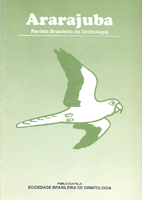
A case of partial leucism in American barn owl (Tyto furcata) (Temminck, 1827) from Buenos Aires province, Argentina
Abstract
The diverse colorations of a birds’ plumage are due to either structural colors or pigments that are synthesized in specialized cells or incorporated through the diet. However, plumage color aberrations can occur; several cases of albinism and leucism have been reported for different bird species and some examples correspond to Strigiformes. A specimen of the American barn owl (Tyto furcata) with partial leucism was found in Carhué, Buenos Aires province. The plumage of its facial disc, tail and the ventral region was completely white; furthermore, the neck, and the primary and secondary remiges were pigmented although in a significantly lighter fashion than in normal-phenotype specimens. The rest of the body presented a normal pattern for the species.
Full Text:
PDF** The work of the Editor in Chief, Managing Office, Associate Editors, and the Editorial Council of Revista Brasileira de Ornitologia is strictly voluntary, and does not involve the use of any resources and infrastructure other than the personal ones**



